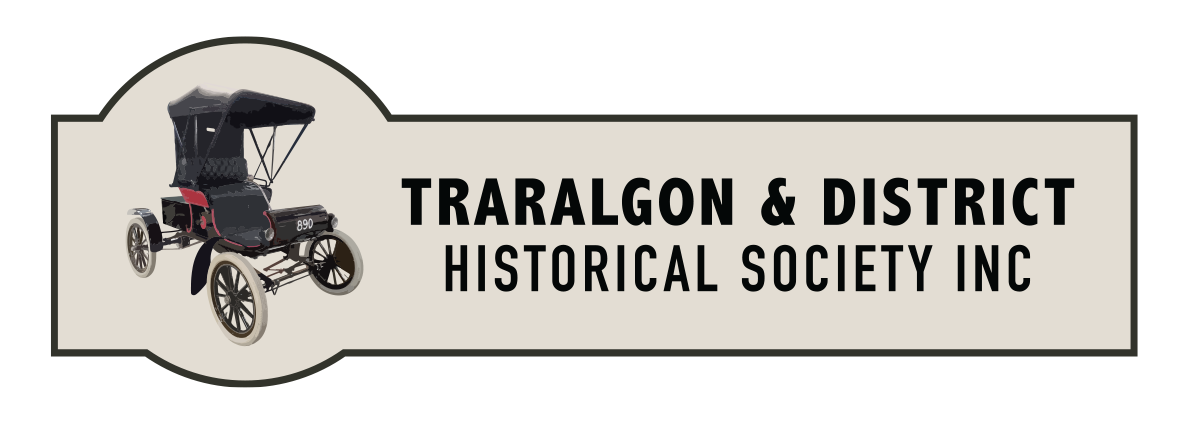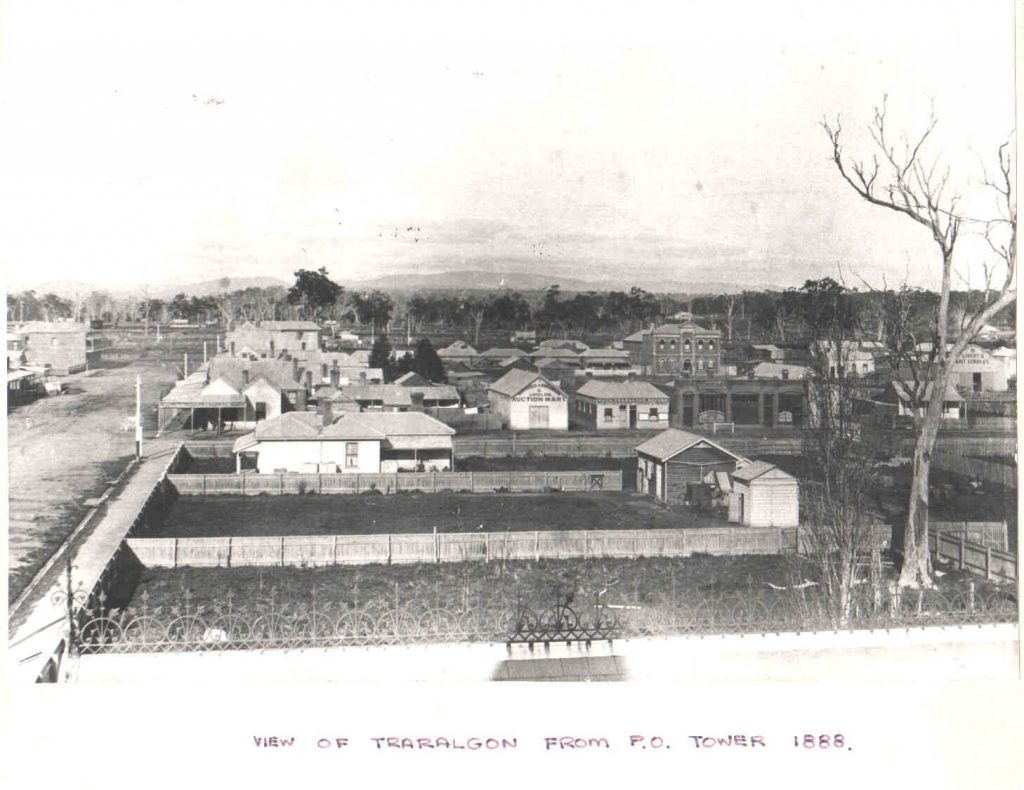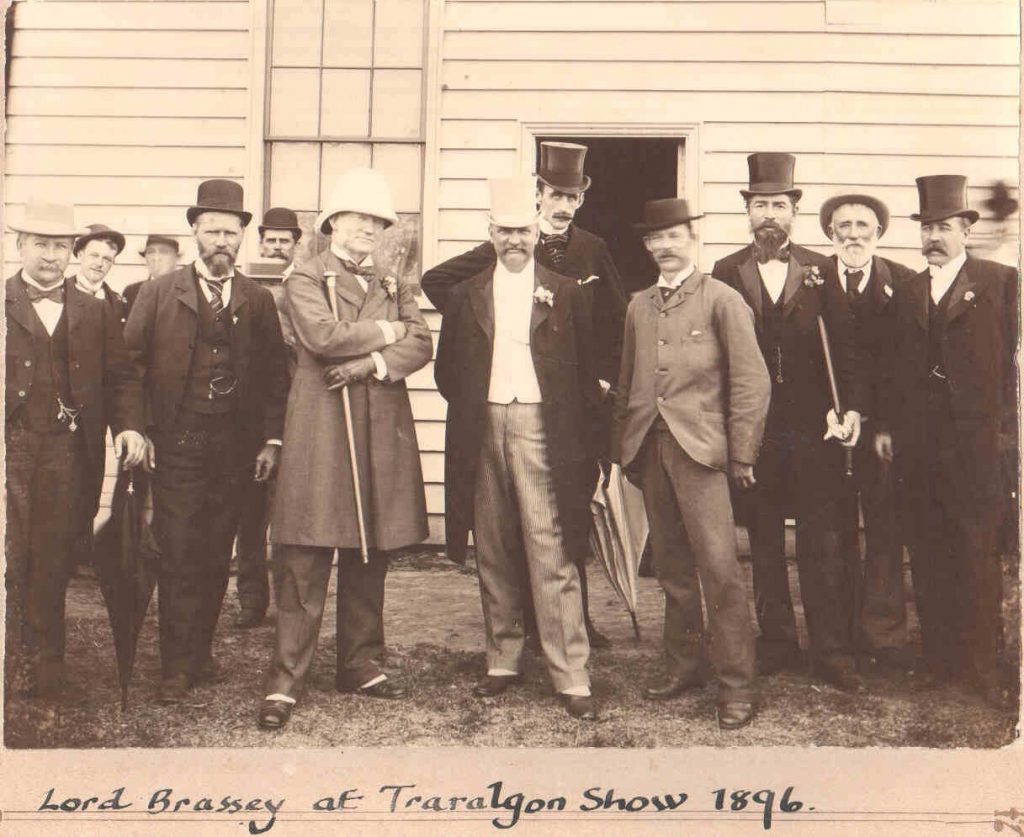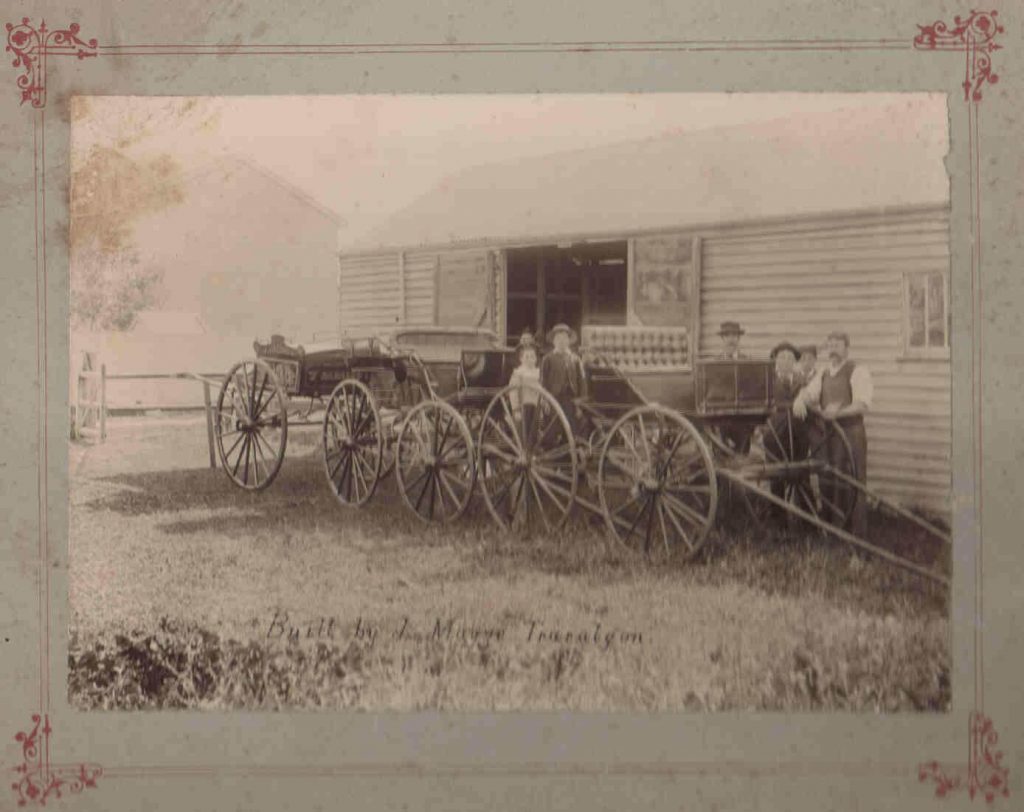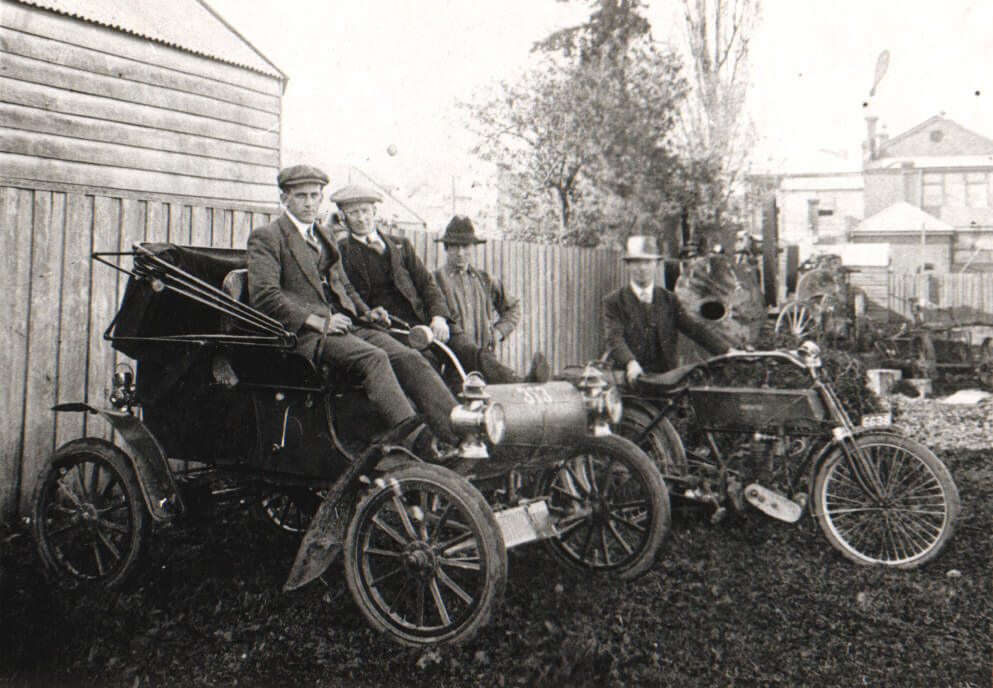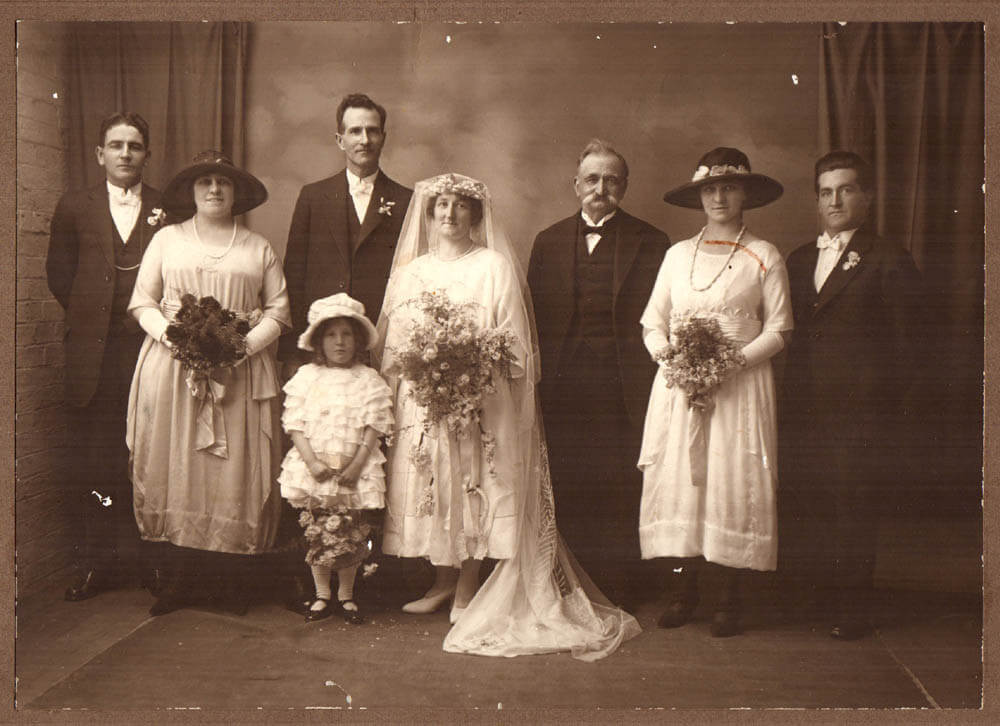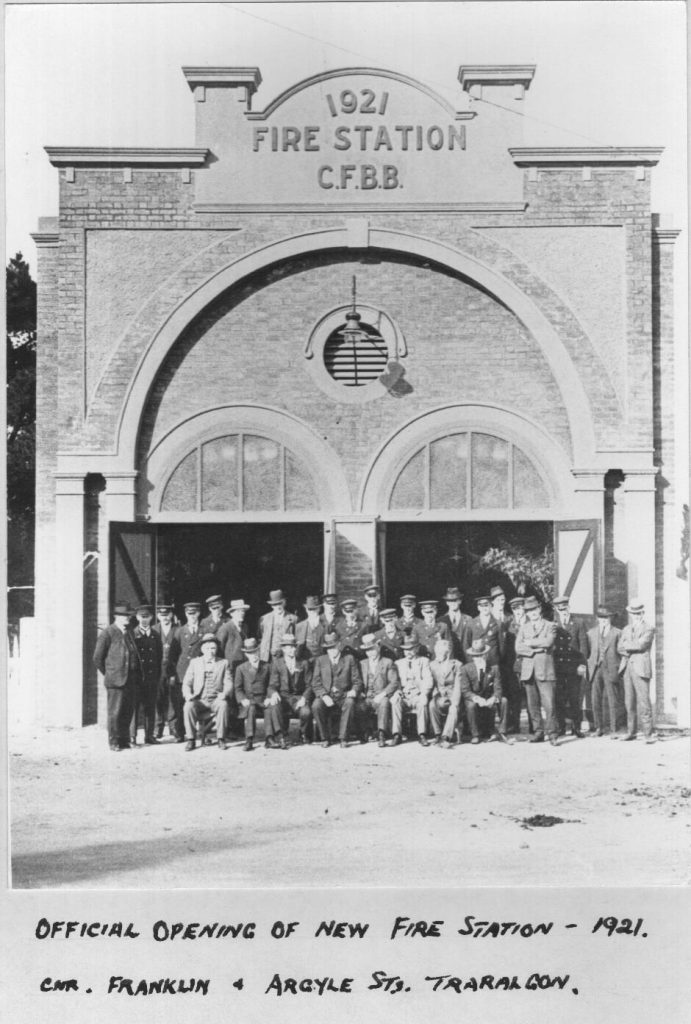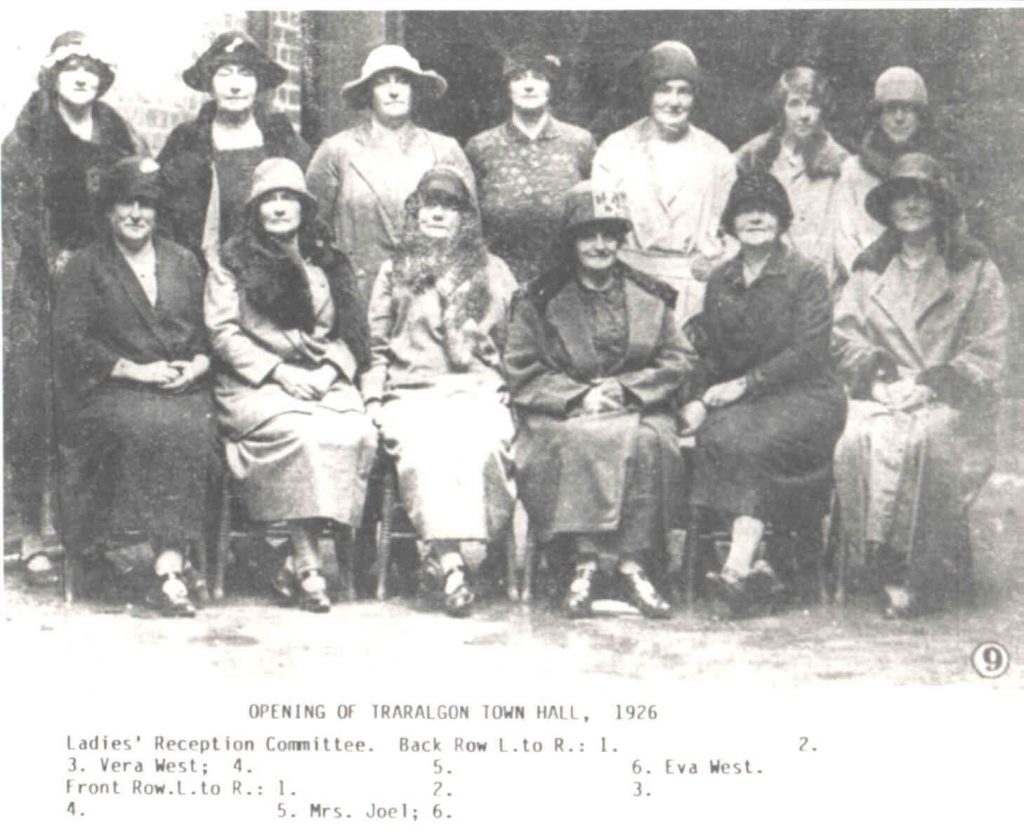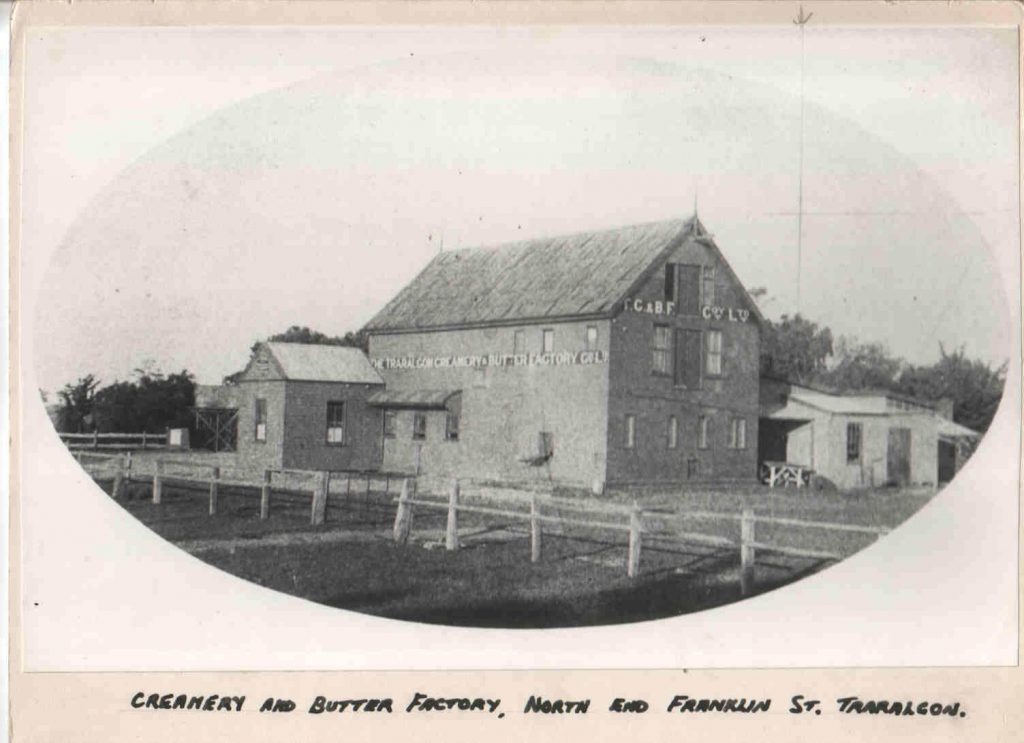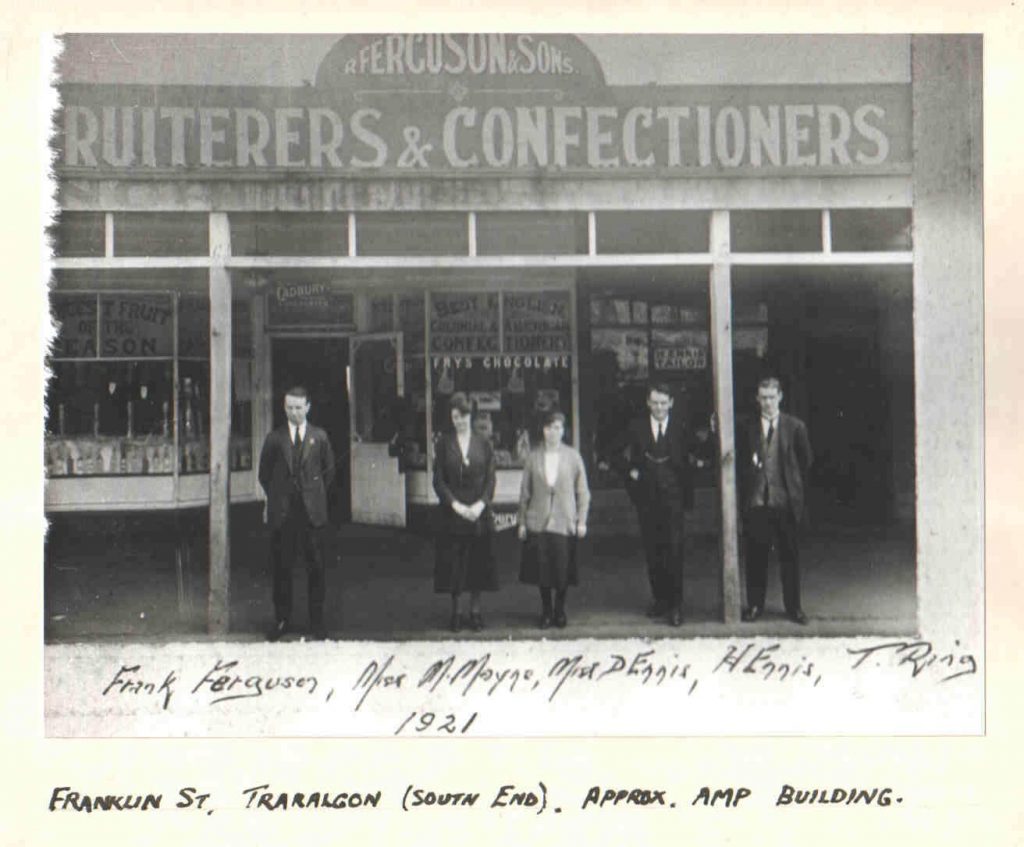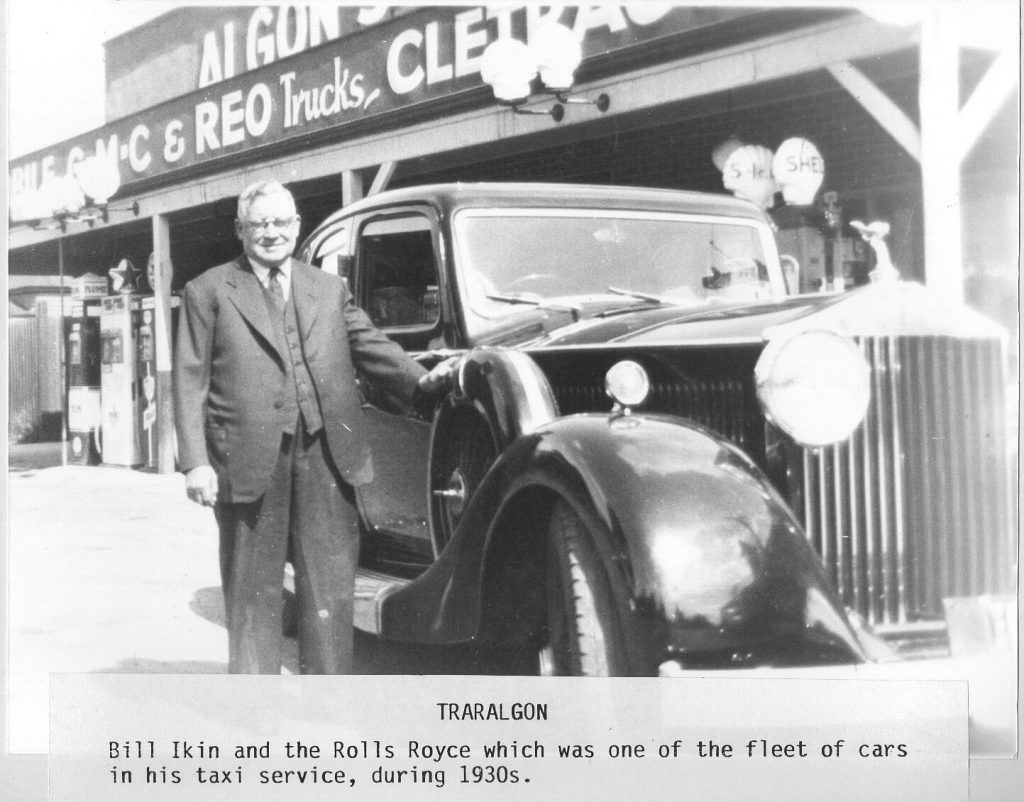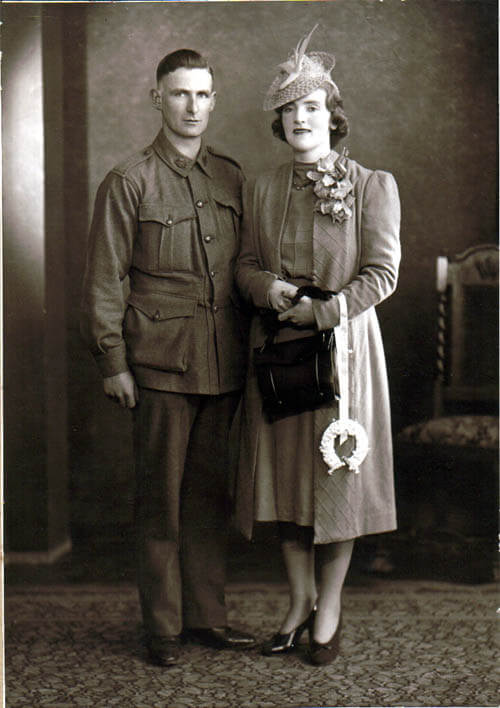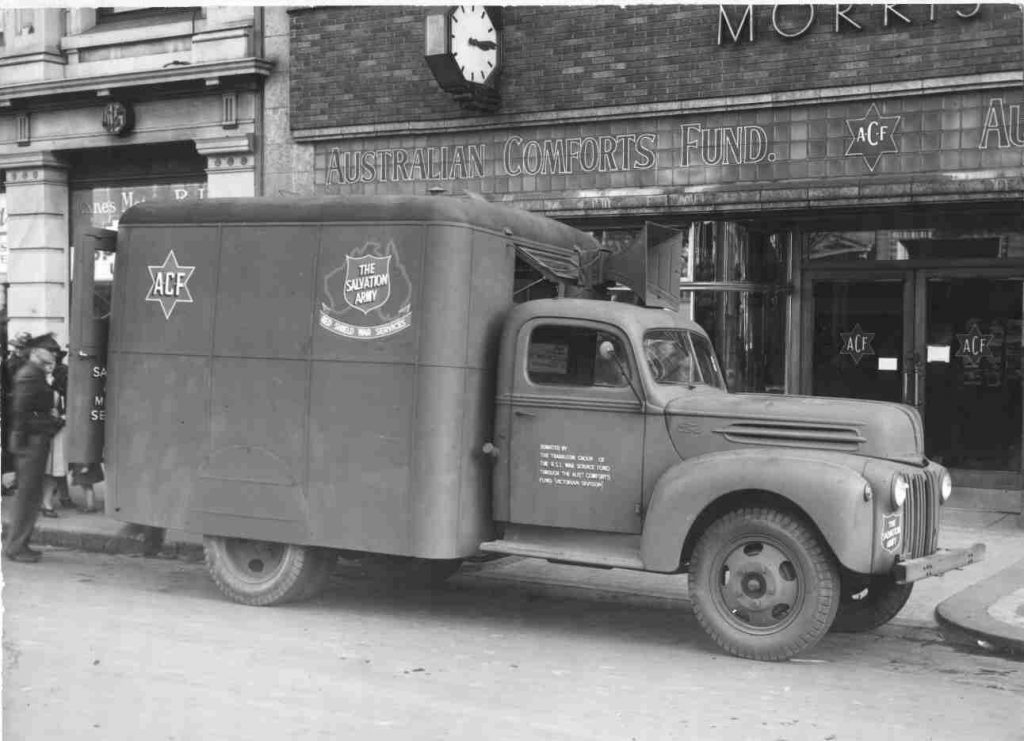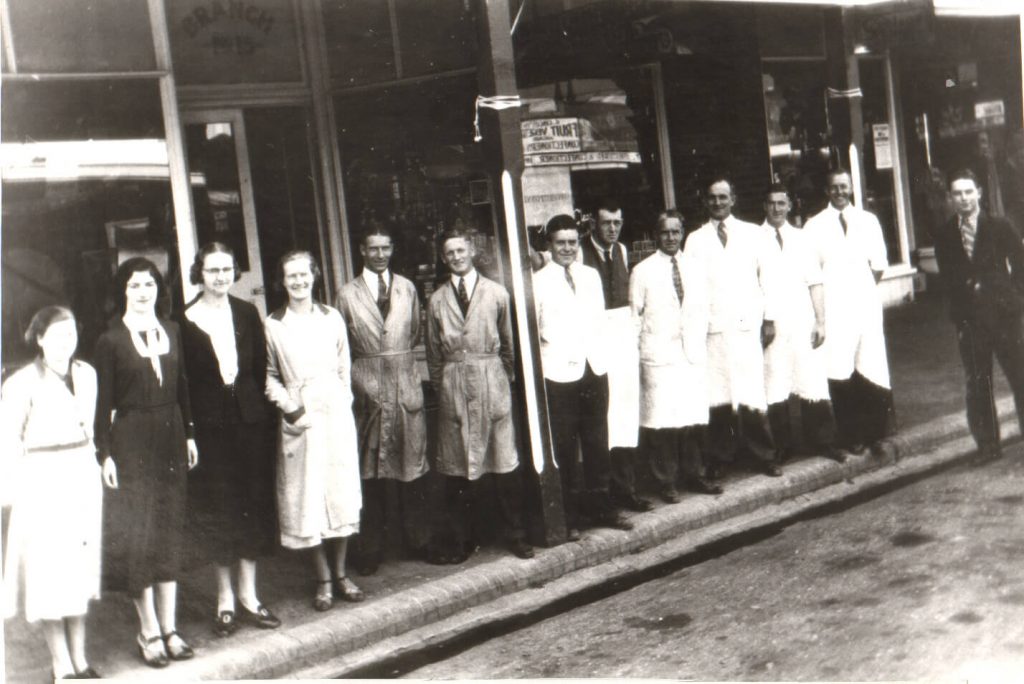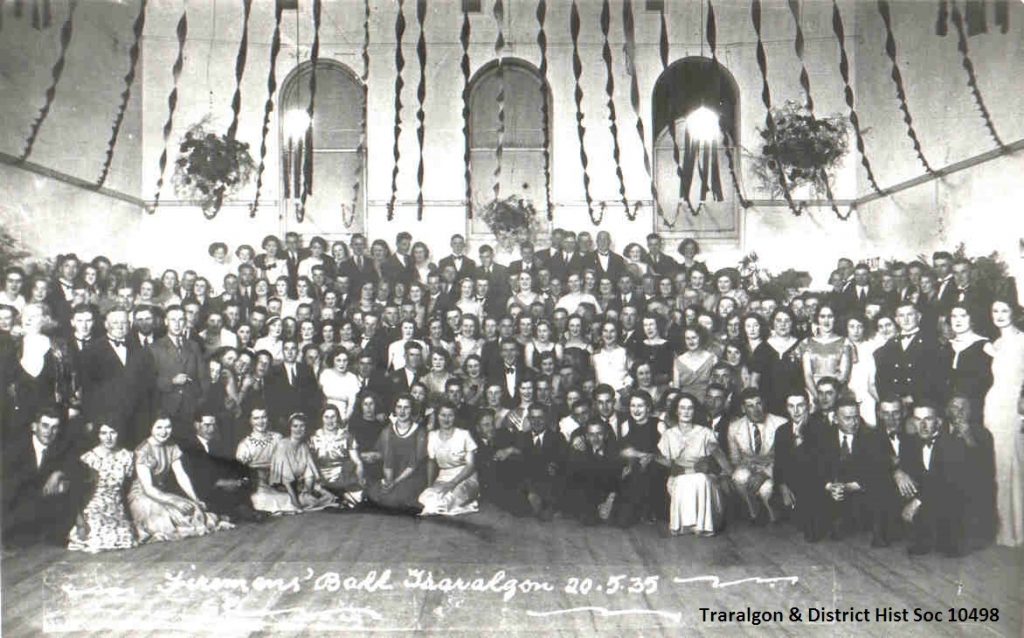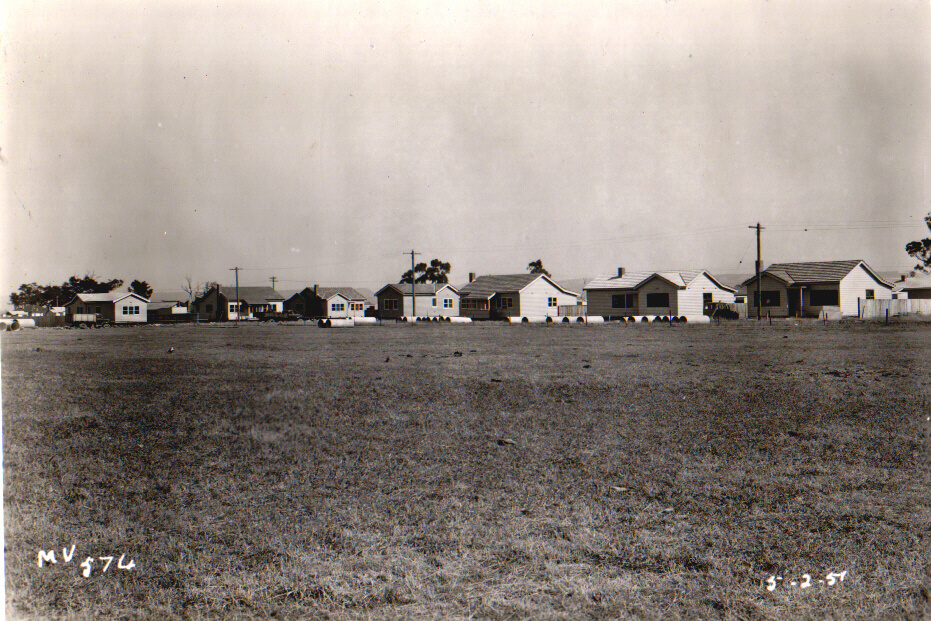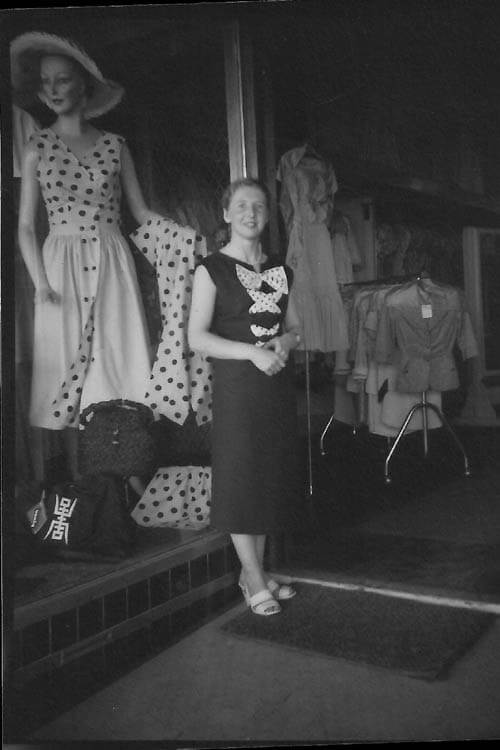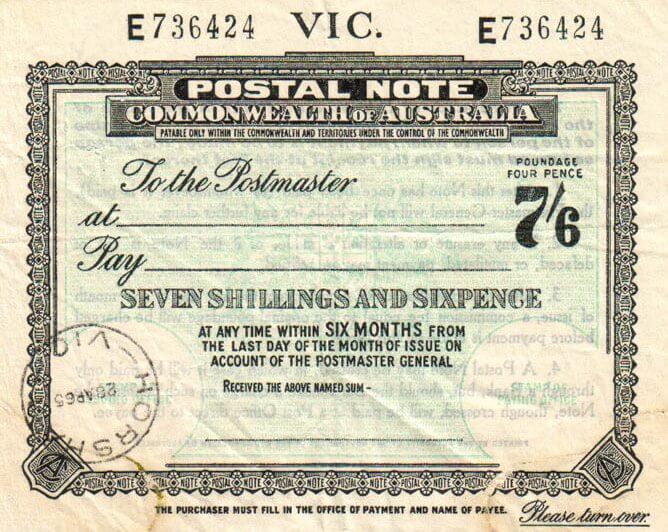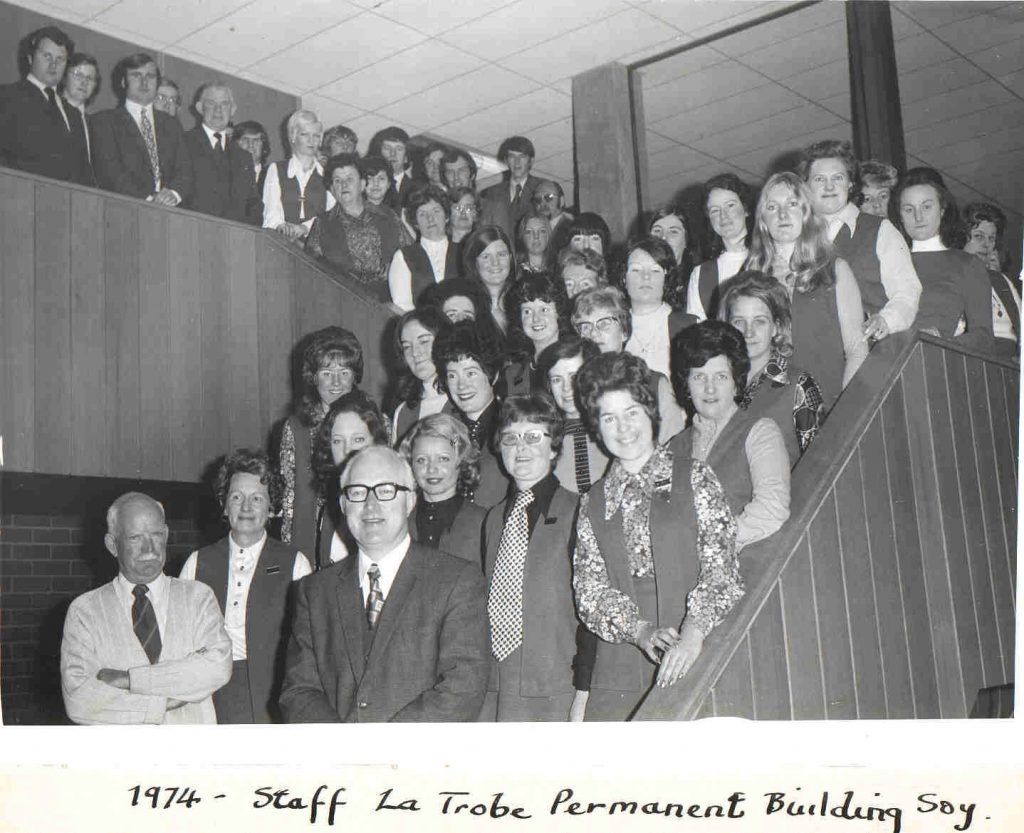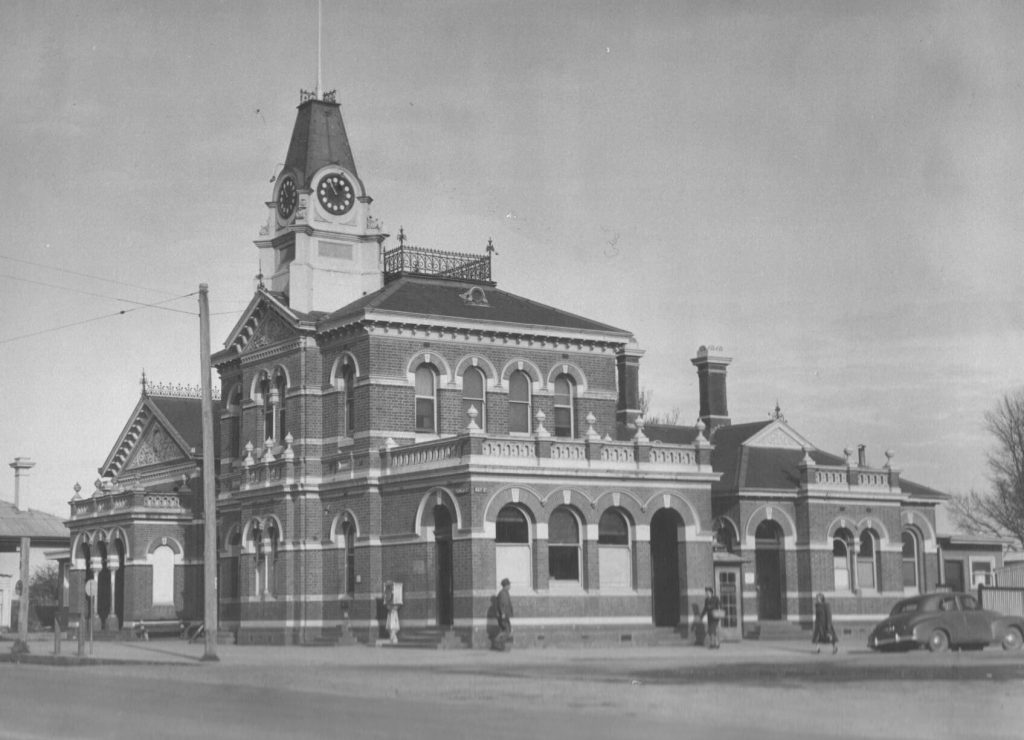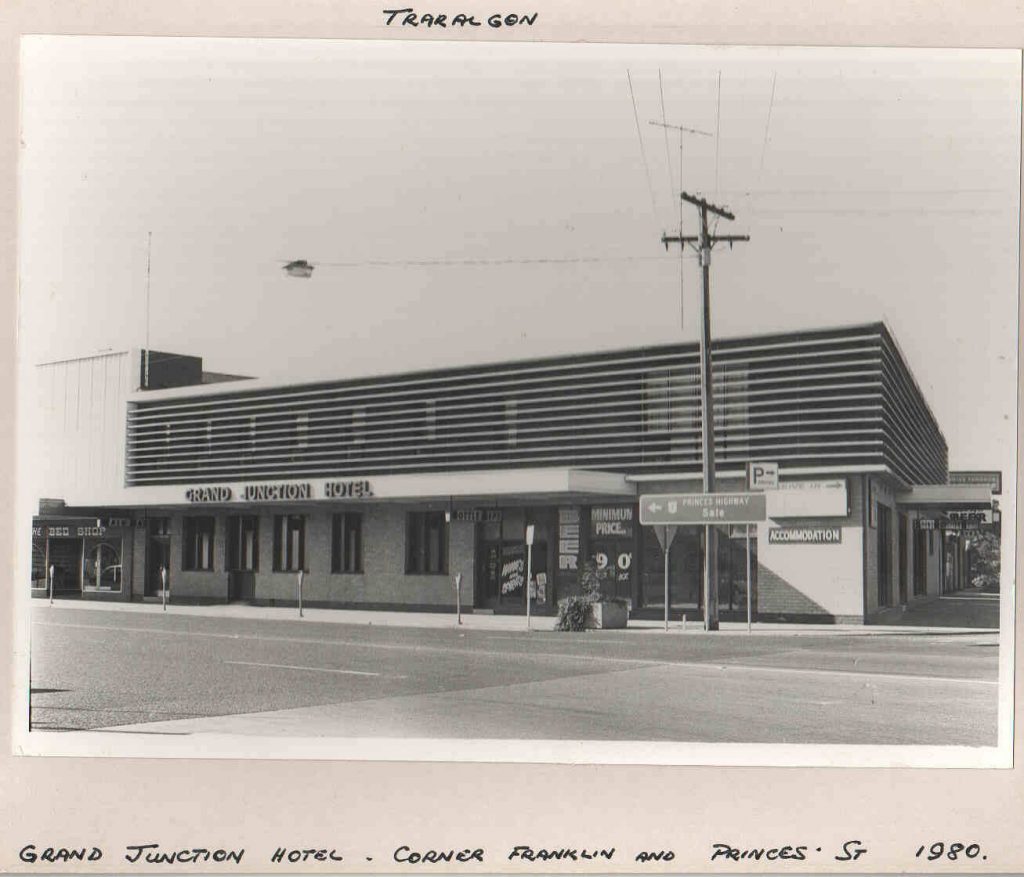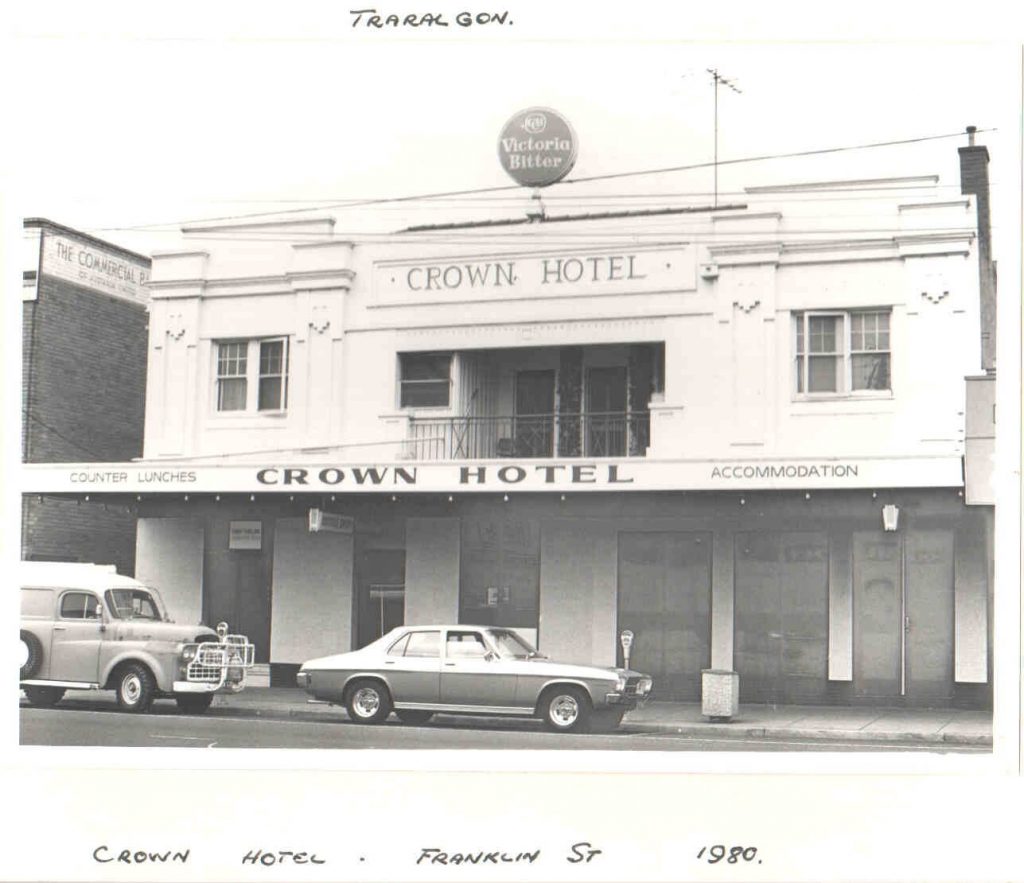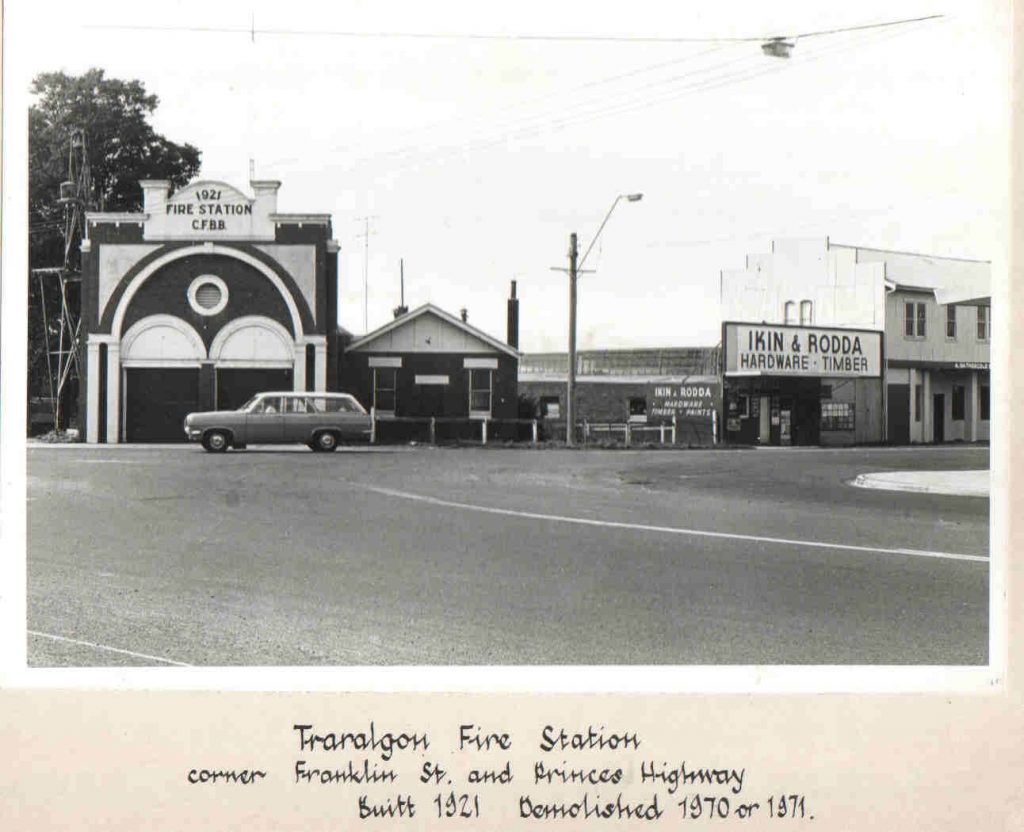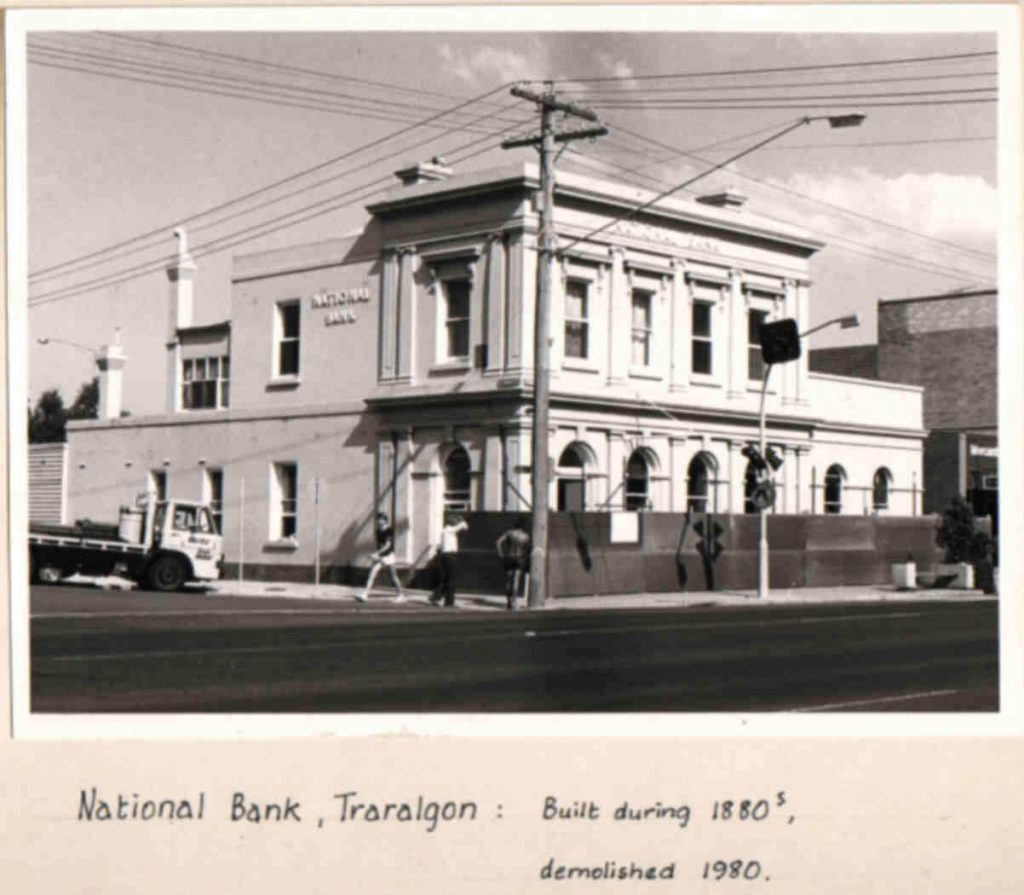Traralgon – The Era of Development
Compiled by J.F. Power (1995)
In 1854, James Purves sold the West Traralgon run to Duncan Campbell. Duncan and his brother built a home on the present site of "Traralgon Park", later to become the home of another Campbell family who were also to play a large part in the development of the town. In 1858, Duncan built a hotel on the rise immediately to the west of the Creek and situated right on the main track. He called it the Travellers' Rest, and for sixty years it served the people of the district as Post Office, store, Court House, Church and what today we would call a community centre. It was pulled down in 1914 to make way for the present Traralgon Hotel, which is known today as Ryan's, The "Woods Point and Gippsland General Directory" for 1866 lists under Traralgon - Duncan Campbell: Grazier, Hotel, Post Office, general store. The first wedding was conducted there in 1863. The Catholic Church conducted their masses in the building used as the Court House, until their own church was built in 1883.
Not long after Duncan built his hotel, gold was discovered in Gippsland on the Tanjil. As Traralgon was on the direct route to the gold fields it soon began to grow. The authorities decided to station a policeman at Traralgon, and late in 1860, Mounted Constable John O'Connor moved into a residence and office that had been constructed on land that now comprises the area from Latrobe Valley Real Estate to Riggall's Gift Shop.
By the late 1860s a few more buildings had appeared and there were about fourteen families living in the village. In 1869 Duncan Campbell disposed of much of his land and moved to Sale to live. However he still retained ownership of the hotel. It was at this time that the homestead and much of the land down to the Latrobe River and to the west was purchased by the other Campbell family, who had come from Ballarat. There were four brothers, Hugh, Nicol, James and Dugald. The family have played a significant role in the district's progress ever since. Dugald was one of the first Councillors of the Shire of Traralgon, and later became President. The present owner of "Traralgon Park" , Mr. Dugald Campbell, is a grandson of James.
At about this time the amendments to the Colonial Land Act enabled many people to take up land, and much of the leasehold land of Loy Yang, Traralgon West, Maryvale and Scarne, as well as much Crown Land, was thrown open for settlement. As a result, by the mid 1870s the population of the area had increased dramatically. Shops were being established, and churches, a school, and several more hotels were built. One of these hotels, the Star, built by George Hickox in 1875, has recently been restored, and now operates as a tea rooms and craft shop. At that time, most of the buildings, including the school and first church, were on the east side of the Creek. With the coming of the railway, the town began to be centred on Franklin Street.
The Rosedale Roads Board was established in 1864, and the Traralgon area came under its jurisdiction. In 1867 it became the Rosedale Shire Council, and local butcher and prominent citizen, Henry Breed, was elected to represent Traralgon. By 1879 the people believed that they were not getting satisfactory service from Rosedale, so a move to form their own Council was started. The Traralgon Shire was formed in 1879, and in 1880 the Council met for the first time in the Courthouse, adjacent to the hotel. Councillor Edmund Kelleher was elected the first Shire President. The first Shire Office was built in 1881 on land fronting the east side of Franklin Street. The site is approximately where the main bus stand outside the Traralgon Plaza, is today.
The building of the railway from Sale to Drouin commenced in 1874, and this provided much work for laborers, sawmillers and sleeper cutters. When the line to Maffra was built some years later, the repair shops and Locomotive Depot were moved from Sale to Traralgon. They remained in service until the 1960s and provided hundreds of jobs over the years. In the Depression years they were the main ...
By the late 1870s a number of shops and other businesses had been established. Ikin and Betteson had a shop in Kay Street near the present site of the Post Office, and Oswald Marriage, from Rosedale, had opened his store on the corner of Franklin and Argyle Streets. Edmund Kaye had bought the Star Hotel from Hickox, but found it was cut off when the road to Sale was relocated. He then built a new Star, a two-storied building in Argyle Street, where today, Latrobe Country Credit's office stands. The top storey of the building was used by the Masonic Lodge. It was later destroyed by fire. James Rogers rebuilt it, only for it to be burnt again years later. It was again rebuilt, and known as the Coffee Palace; then served as an accommodation house until the early 1950s. The new Masonic Temple was built in Church Street, where it remained until the 1970s, when they relocated to the old TV studios near the Golf Course.
By the mid 1880s, much of the surrounding country had been selected, and the town was now a bustling place providing goods and services for the settlers. Many suffered hard times, particularly those who had settled in the hill country. Poor roads and wet winters meant that many lived in virtual isolation for months at a time. Many letters from ratepayers to the Council during these years invariably dealt with the state of the roads.
In 1883, the Agricultural Society was formed, and an area was set aside for recreation, and to conduct Shows. Today, 113 years later, it is one of the finest Recreation Reserves in the State.
In the mid 1880s, the present Post Office and Courthouse were built and were opened in 1886. Today both buildings, with Ryan's Hotel, enjoy National Trust status.
The main occupation of the settlers in the area was dairying. At first it was very primitive. Milk was set in dishes; the cream was then skimmed off and made into butter, which was sent to Melbourne by train. In the early 1890s, the first Creameries were set up; the farmers took their milk to these, where the cream was separated. The skim milk was taken back to their farms to feed their pigs. By 1894 the first cream separators began to appear on the farms, and this revolutionized the industry. Very soon all of the little settlements had their own Butter Factories. Traralgon had two; the second one lasted until the late 1950s. In 1952 it was bought out by South Eastern Milk Products. They later erected a large modern milk factory on the Glengarry Road. Eventually, it in turn was taken over by Murray Goulburn, and all operations were transferred to Maffra and Leongatha. The original factory building still exists. For some years it served as a Cordial Factory and then a Market.
For nearly seventy years, the farming sector was the backbone of Traralgon's economy, and Wednesday was the busiest day of the week. The farmers brought their pigs to the weekly sale, conducted by Thomas Standing and Company in yards at the west end of Hotham Street, about where the Fire Station now stands. While the men were at the sale, their wives did the shopping. Stores such as Layton Bros., (later W.A. Purvis Stores), O. Gilpin and Jefferys were busy places, as were Cuddigan's, Bullock's and Brereton's, the grocers. Then there were Vickers, Phillips and Cincotta, the green grocers; and Stoddart and Marsh, the butchers. Most of these traders no longer exist. Stoddart's is still trading, but is now in Henry Street. Riggall's store still exists; but is now a gift shop, and is no longer owned by the Riggall family. Now, the big stores like Coles, Kmart and Safeway hold sway.
During those years from the 1890s until the mid 1930s, nothing much changed in Traralgon. The war caused much trauma, as it did everywhere. Some two hundred men and several women went from the Traralgon district to the first World War. Fifty two of them did not return. The motor car began to appear in the 1920s, although the odd one had been around before the war. Wireless also became common, and people were able to listen to the rest of the world. Gas had been produced for many years, and by the late 1930s, much of the district had electric power.
In 1936, Australian Paper Mills decided to establish a Pulp and Paper mill at Maryvale, about eight kilometers west of Traralgon. Although the actual site was in the Shire of Morwell, it was Traralgon that received the most benefit. Most of the employees made their homes here, and the Company purchased land in the town and erected homes for its senior employees. Many who had been out of work, due to the Depression, obtained employment on the construction site, and later as production workers. Wood was obtained from the mountain forests to the north-west, and this provided more work for timber cutters and carters.
The Second World War intervened and many of the town's young people went off to fight another war. Their places were taken by the older men and women. Many women worked at the mill during the war years, doing the work that had previously only been done by men. Although nearly 900 men and women served in the forces during the war, the casualty list was not so great. Thirty three citizens gave their lives in that conflict.
After the war, the town began to grow rapidly. The vast expansion of the SEC at Morwell led to more jobs in Traralgon. The APM began a big program of expansion, which included the large scale construction of houses in Traralgon for their employees. This led to the establishment of numerous industries in the town, including the Great Eastern Brickworks and Gippsland Cement. These, of course, provided more work and led to a further increase in the population. Many of those who came were migrants from many different countries. They enriched the life of the town. Unfortunately, while the brickworks is still in production (now owned by Boral), the cement factory is closed.
By the late 1950s, moves were afoot to sever the town from the Shire, as it could be seen that the development of the urban sector was moving much faster than that of the rural sector. There was much, sometimes bitter, argument surrounding this question, and eventually, in 1961, the Borough of Traralgon was created. Councillor John Maskrey became the first Mayor. Two years later, Traralgon was declared a City, and Councillor Don Cooper was elected its first Mayor.
Since that time, there has been great progress. Development really boomed in the mid 1970s, when the SEC commenced the Loy Yang Project. At the same time, the APM brought another paper machine on line at Maryvale, and also increased its pulp mill capacity.
The Shire agreed to many large subdivisions of rural land, both on the outskirts of the City and at Traralgon South, Hazelwood North and Callignee. Many of the workers engaged on these projects elected to live in these areas, leading to a large increase in the surrounding population, which in turn, boosted the business community. The economic downturn in the 1980s was compensated for by the establishment of the Australian Securities Commission Data Base Centre, which at its peak, employs up to four hundred workers.
In 1994, a further significant development took place with the Council amalgamations. The former City of Moe, City of Traralgon, the Rural City of Morwell, the Shire of Traralgon and parts of the Shires of Narracan, Mirboo and Rosedale amalgamated to become the La Trobe Shire. The former offices of the City of Traralgon became the headquarters of the new Shire. This has led to further growth in the district.
References:
The River of Little Fish - William J. Cuthill 1970
From Squatter's Hut to City - W.A. Thompson and Jean Court, 1976
A History of Loy Yang, 1844-1978 - Kathleen M. Huffer, 1979
